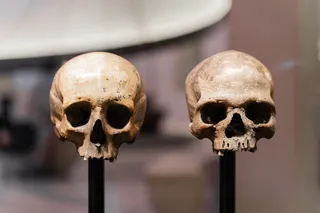Studies about our canine companions’ incredibly strong senses of smell have wowed humans for decades. A hefty body of research suggests that trained dogs can sniff out everything from different kinds of cancers (including lung, breast, bladder, ovarian, colorectal and prostate, the last of which they detected with 99 percent accuracy) to COVID-19 infections.
Read More: How Do Dogs Sniff Out Diseases?
While it hasn’t yet been determined if humans can sniff out such diseases, our noses are … well, nothing to sneeze at. In fact, researchers continue to show us that the human nose is a pretty cool appendage. To prove it, here are four facts you may not know about your own nose:
According to a study published in the Journal of Neuroscience in 2018, those of us who breathe through our noses may remember things better. After sampling a dozen different smells, researchers asked half of the ...














